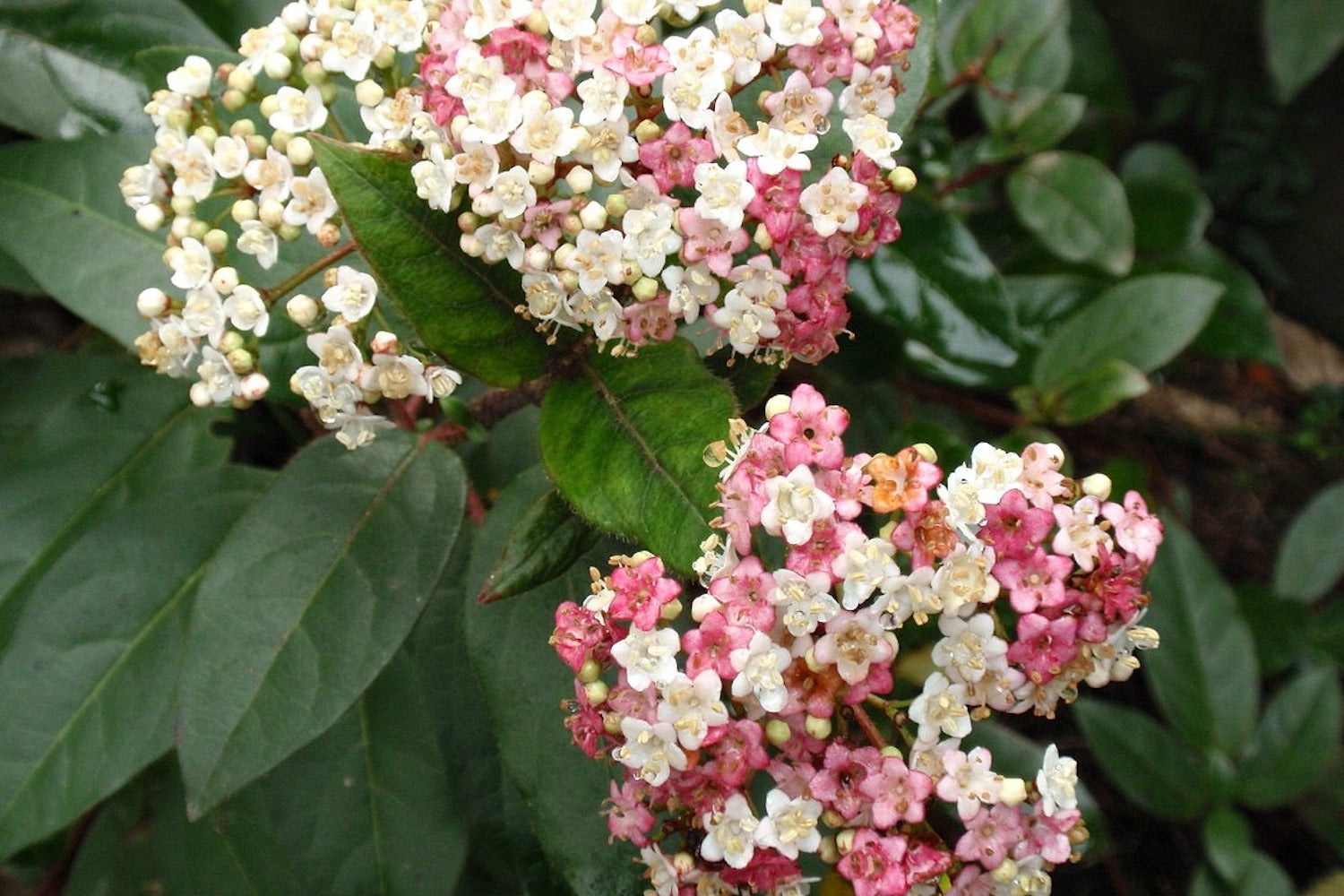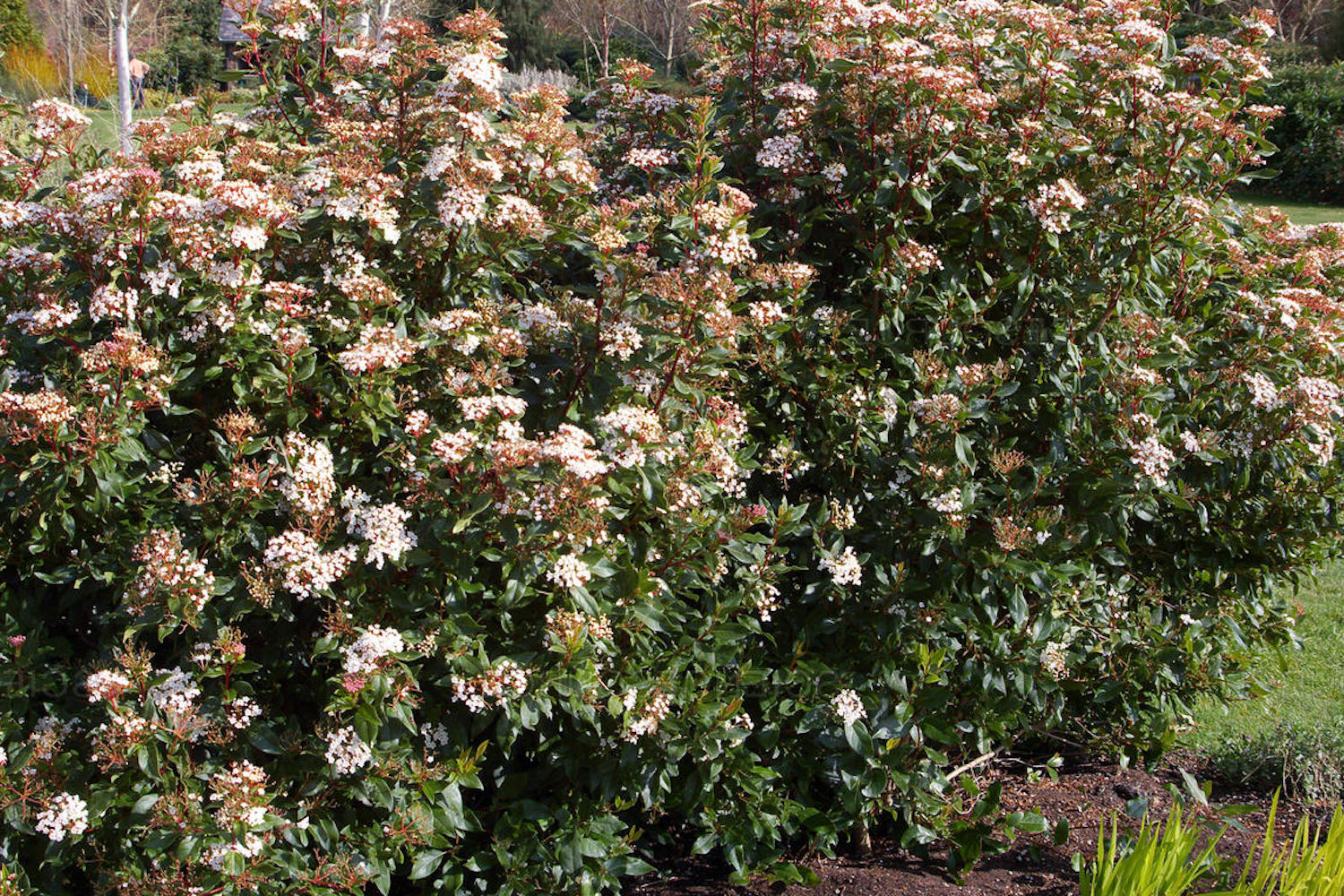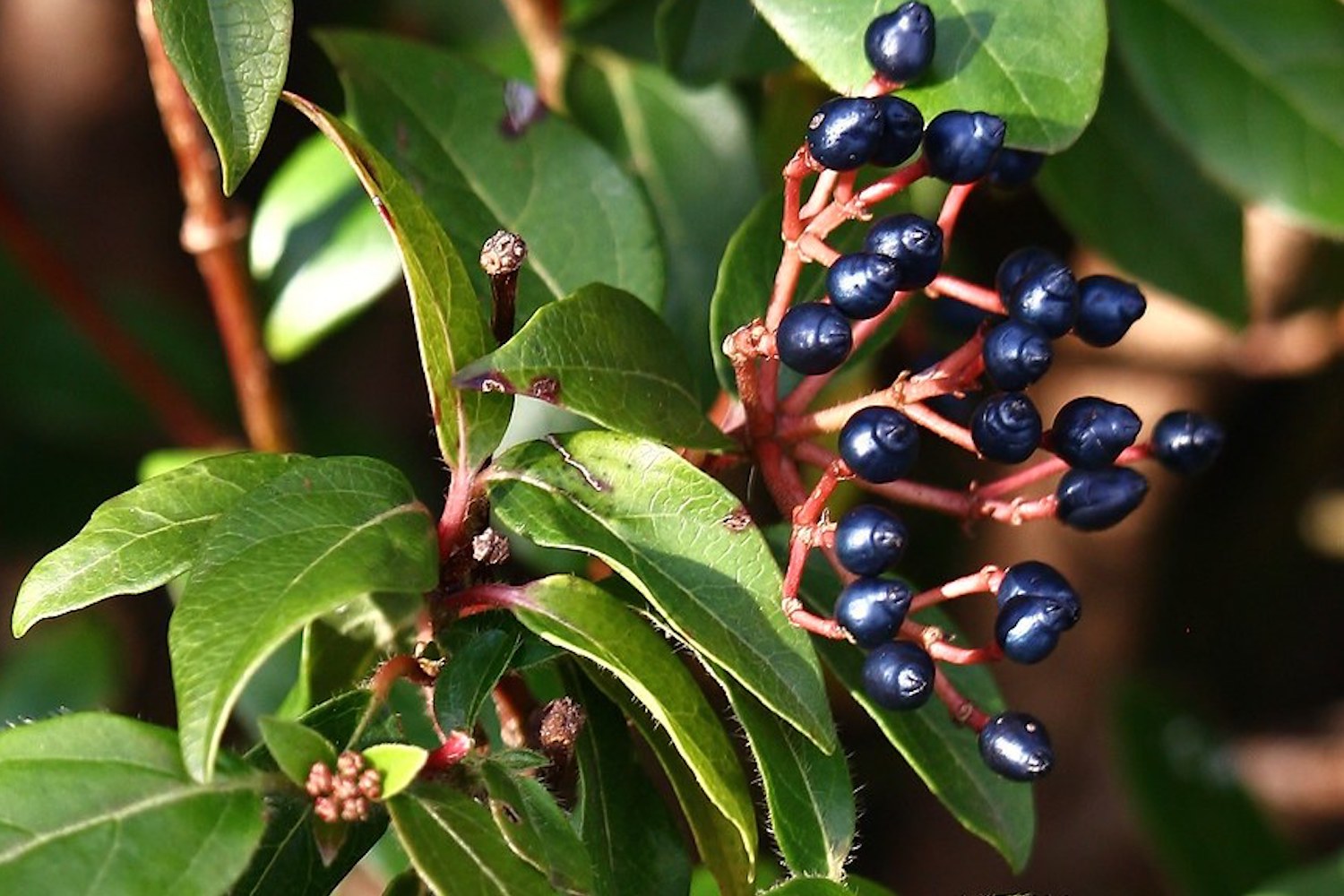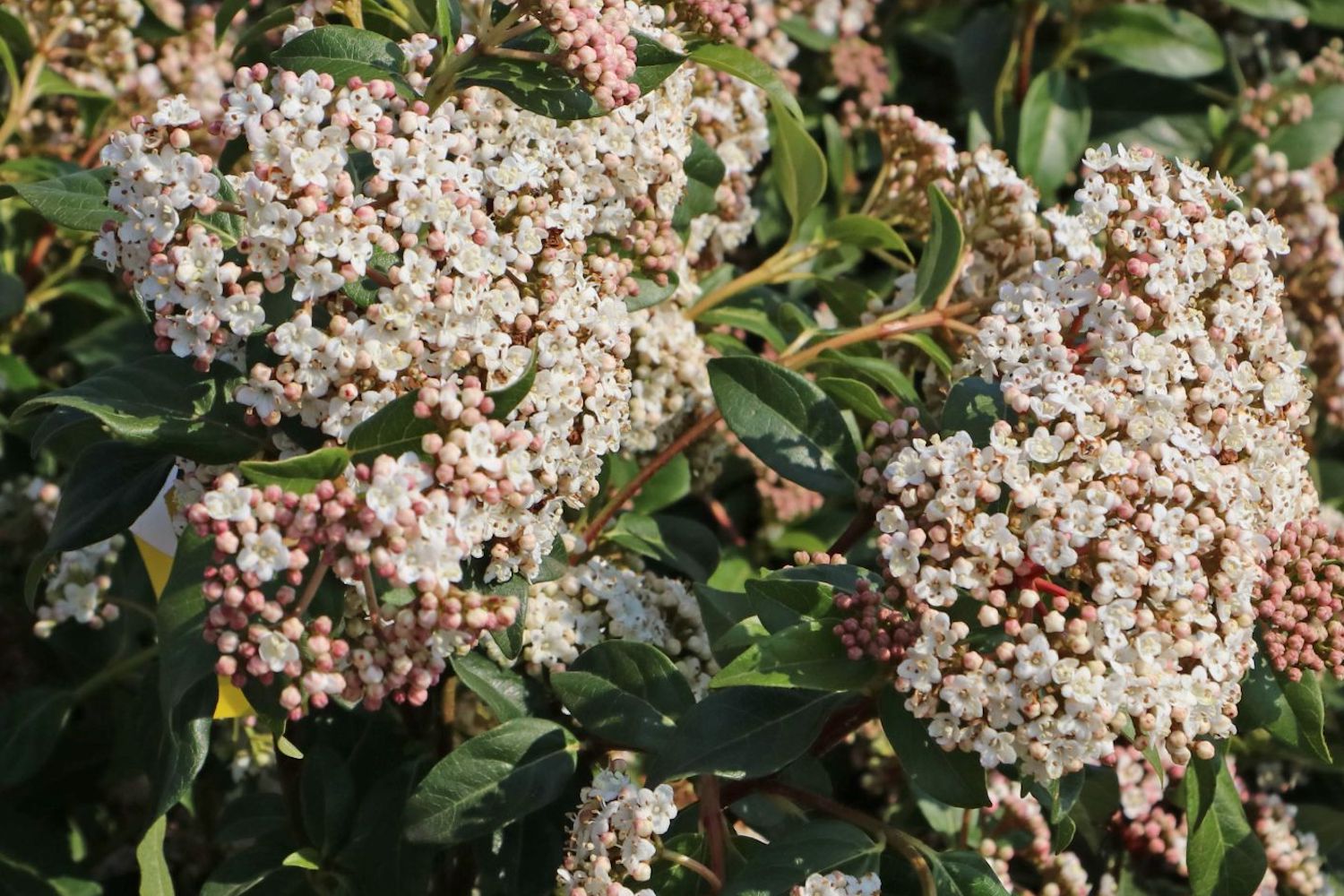Viburnum tinus 'Eve Price'
Approx. 0.5 litre pot
About this cultivar:
Viburnum tinus 'Eve Price' is a compact bushy, medium-sized evergreen shrub with broadly oval, smaller leathery dense dark green leaves and, from late winter, flattened clusters of deep pink buds opening to small, starry white-pink flowers. The compactness, smaller leaves, denseness, and excess pink distinguishes it from the species. Berries deep metallic-blue. Famed for its resilience to taking exposure to wind - even on the coast - and to hard-pruning, so it is easily clipped into a hedge, or a clipped feature or specimen plant.
According to Chris Clennet the cultivar apparently originated in Wakefield place (where he worked) but was originally purchased from Dickson's of Chester. It was then named by the then owner of Wakefield Sir Henry Price in 1960 and was awarded the Royal Horticultural Society Award of Garden Merit in 1961. Still going strong.
The species Viburnum tinus (once called laurustinus or laurustine) is a species of flowering plant in the family Adoxaceae, native to the Mediterranean area of Europe and North Africa. Laurus signifies the leaves' similarities to bay laurel. The specific epithet, tinus, is Latin for tenth, referring to the month the shrub often begins to flower. Evergreen in all but the hardest of winters. Given its native habitat you can guess it was been in European gardens since antiquity (tinus was found in Pompei ruins etc). I always like the idea of Herodotus or some other ancient busy body writing their journals and then pruning their Viburnum ...
A short youtube video I found below (Mentions 'Eve Price' towards the end:
- Position: Full sun, partial shade
- Soil: Almost any soil, grows well in Ballyrobert
- Flowers: December, January, February, March, April
- Other features: Grows well in Ballyrobert, Royal Horticultural Society Award of Garden Merit (RHS AGM)
- Hardiness: Fully hardy, grows well in Ballyrobert, H4 - Hardy through most of the UK (-10 to -5°C)
- Habit: Bushy
- Foliage: Evergreen
- Height: 150 - 250 cm (5 - 8 ft) Prune!
- Spread: 150 - 250 cm (5 - 8 ft) Prune!
- Time to full growth: 10 to 20 years
- Plant type: Herbaceous Perennial, shrub, tree
- Colour: Green, white, pink
- Goes well with: Clematis
About this genus:
Viburnum is a genus of about 150–175 species of shrubs or (in a few species) small trees in the moschatel family, Adoxaceae. The member species are native throughout the temperate Northern Hemisphere, with a few species extending into tropical montane regions in South America. Long popular in gardens one species, Viburnum tinus, was found depicted in the ruins of Pompeii – specially in a fresco in the House of the Wedding of Alexander. The genus name is what the romans called Viburnum lantana.
Viburnums are quite varied but generally bloom in April and May. They vary in their height, spread, and style of flower but are similar in preferring sun and part shade and in being disease and pest resistant. They will grow almost anywhere that isn’t waterlogged, and they can usually be controlled by pruning. Often they are paired with clematis (to add summer flowering interest)
While most flowers are unscented, those that are fragrant are wonderfully so. Some species also have a fringe of large, showy sterile flowers around the perimeter of the corymb to act as a pollinator target. An interesting source of diversity in the viburnums comes with the leaf shape and texture. The fruit is often also of visual interest, with red, to dark purple to black berries, which often serve as an important food source for birds.
Thus such diverse, tough, easy to grow, beautiful, disease resistant plants are ubiquitous in gardens. I once heard that if you can’t name an attractive shrub in a garden then ‘Viburnum’ is not a bad guess! Val Bourne has said “Every garden should contain at least one spring-flowering viburnum” and I couldn’t agree more.
The Tyrolean Iceman, the well-preserved-in-ice natural mummy of a man who lived between 3400 and 3100, was found with long, straight shoots of some viburnum. Presumably these shoots were used for arrows, however I like to think he was a pre-historic gardener just doing a spot of pruning…








